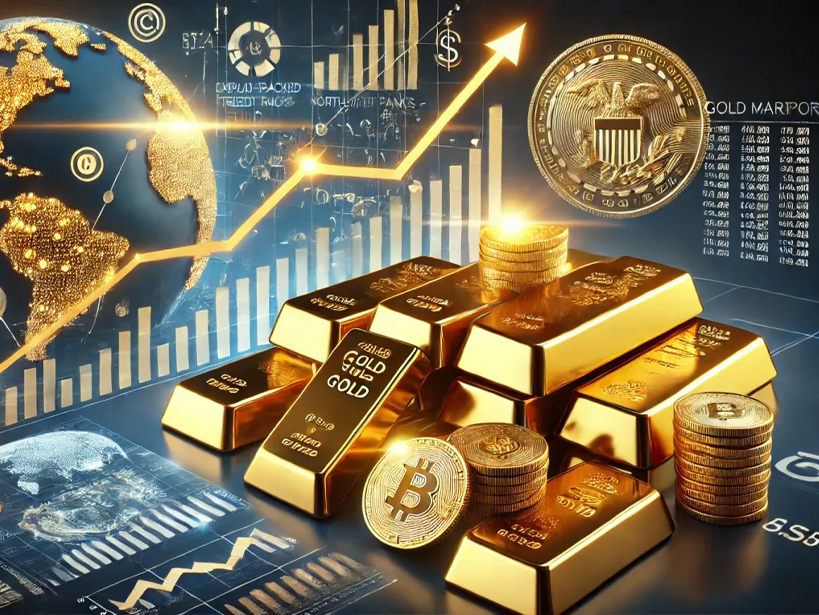Gold has long been considered a safe-haven asset, and its price continues to climb, reflecting global economic uncertainty and shifting investor sentiment. As of late, the precious metal has seen a sustained rise in value, driven by several key factors that make it an attractive option for investors seeking stability amid volatility.
Economic Uncertainty and Inflation
One of the primary reasons for gold’s rise is the ongoing economic uncertainty. Global economies are facing multiple challenges, including inflationary pressures, geopolitical tensions, and sluggish growth. Inflation, in particular, erodes the value of fiat currencies, pushing investors to seek out assets that preserve purchasing power.
Historically, gold has been viewed as a hedge against inflation, as it tends to retain value even when the cost of living increases. With central banks around the world raising interest rates to combat inflation, many are turning to gold as a reliable store of value during turbulent times.
Geopolitical Tensions
Geopolitical instability, especially in regions with strategic economic importance, has also fueled the demand for gold. Whether it’s trade tensions, military conflicts, or political instability, such events create an atmosphere of uncertainty. Investors flock to gold when markets are rattled by geopolitical risks, as it offers a degree of security that other assets, like equities or bonds, might not provide during crises. The ongoing conflict between Russia and Ukraine, for example, has contributed to a climate of uncertainty, driving demand for gold as a protective asset.
Weakening U.S. Dollar
The U.S. dollar typically has an inverse relationship with gold prices. When the dollar weakens, gold becomes more affordable for investors holding other currencies, driving demand. In recent years, while the dollar has shown moments of strength, the overall trend of concerns about U.S. debt levels and monetary policy decisions has raised questions about the long-term stability of the dollar. This weakening of the dollar, especially in times of economic turbulence or when central banks take dovish stances, typically boosts the price of gold.
Central Bank Demand
Another important factor is central bank demand for gold. Many central banks, particularly in emerging markets, have been increasing their gold reserves in an effort to diversify away from U.S. dollar-denominated assets. Countries like China, Russia, and India have all been notable buyers of gold in recent years. This increased demand from central banks adds upward pressure on prices and signals a global trend toward gold as a reliable reserve asset.
Investment in Gold-Backed ETFs
The rise of exchange-traded funds (ETFs) backed by physical gold has made it easier for retail investors to invest in the metal. As market volatility and economic uncertainty persist, gold-backed ETFs have seen significant inflows. This growing interest from institutional and individual investors alike has added further momentum to gold’s upward price trajectory.
Gold’s continuing rise can be attributed to a confluence of factors, including economic uncertainty, inflationary pressures, geopolitical tensions, a weakening dollar, and central bank demand. As the global landscape remains volatile, gold is likely to remain a favored asset for investors seeking stability and protection against market risks.

